Open Journal of Inorganic Chemistry
Vol.3 No.4(2013), Article ID:38091,9 pages DOI:10.4236/ojic.2013.34012
Structural studies and conductivity of [Fe(O3C4)(COO)]∙H2O based H4btec (H4btec = 1,2,4,5-benzenetetracarboxylic acid)
![]()
1Laboratoire de Chimie Inorganique, Faculté des Sciences de Sfax, Université de Sfax, Sfax, Tunisia
2Laboratoire de Matériaux Inorganiques: Chimie Douce et Réactivité, UMR 6226 Sciences Chimiques de Rennes, Université Rennes 1, Rennes, France
Email: *manel_halouani@yahoo.fr, m_abdelhedi2002@yahoo.fr, meddammak@yahoo.fr, nathalie.audebrand@univ-rennes1.fr, ktarililia@yahoo.fr
Copyright © 2013 Manel Halouani et al. This is an open access article distributed under the Creative Commons Attribution License, which permits unrestricted use, distribution, and reproduction in any medium, provided the original work is properly cited.
Received 17 June 2013; revised 17 July 2013; accepted 24 July 2013
Keywords: Hydrothermal Synthesis; X-Ray Diffraction; Crystal Structure
ABSTRACT
A new metal-organic hybrid compound [Fe(O3C4)(COO)]∙H2O I has been hydrothermally synthesized and characterized by single-crystal X-ray diffraction. Rust crystals crystallize in the monoclinic system, space group I2/a, a = 6.9651(2) Å, b = 8.12630(10) Å, c = 19.4245(2) Å, β = 92.6600(10)˚; V = 1098.25(4) Å3; Z = 2 and Dx = 3.63 g/cm3. The refinement converged into R = 0.042; Rw = 0.058. The structure, determined by single crystal X-ray diffraction, consists of a network of FeO6 centers, octahedral coordinated by btec (btec = 1,2,4,5-benzenetetracarboxylic acid) anions giving rise to a two-dimensional sheet structure. In the compound I, [Fe(O3C4)(COO)]∙H2O, the FeO6 group bridged by the 1,2,4,5-benzenetetracarboxyl anion exist in a unit cell, with each anion lying about an inversion centre. One of the FeO2 a distance [1.965(2)] significantly corresponds to the shortest distance as the other and the distances found in the axial direction of compound I.
1. INTRODUCTION
During the past decade, the design and synthesis of crystalline material constructed from molecular clusters linked by extended groups have attracted great attention. Most notable fields are metal-organic frameworks (MOFs), [1-7] in which polyatomic inorganic metal-containing clusters are connected by polytopic linkers. The direct driving forces originate not only from their fascinating topological structures but also from their versatile applications in gas adsorption and separation, catalytic activities, optoelectronic material, luminescence, magnetism, and so on [8-19]. Thus, structural design or modification of the coordination polymers has become a very active field in crystal engineering [20-24]. In this process, judicious selection of ligands as basic building blocks is of great importance because slight structural changes in the organic building blocks such as length, flexibility, and symmetry can dramatically change the structural motifs of coordination polymers. It is well known that organic ligands play a rather important role in the construction of MOFs, and multicarboxylate ligands are frequently chosen owing to their rich coordination modes, coordinating to metal ions through complete or partial deprotonation of their carboxy groups, and their metal binding ability [25-30]. Especially interesting are the complexes formed by H2bdc and H3btc having one-dimensional polymeric chain or brick-wall structures and their selective guest binding abilities [31- 46].
In spite of the rich coordination chemistry exhibited by H2bdc and H3btc (Chart 1) in the presence of auxiliary ligands and coordinated solvents, barring a few sporadic reports, which mainly concentrate on the direct interaction between the metal ion and the ligand, there have been no serious attempts to prepare metal-organic polymeric or supramolecular structures based on 1,2,4,5- benzene tetracarboxylic acid (H4btec) [47-65]. It may be argued that, due to steric reasons, all the four carboxyl groups of H4btec are unlikely to take part in coordination to the metal. However, even the presence of free -COOH groups (especially in the vicinity of coordinated water molecules, donor solvents and added amines) would lead to formation of new extended structures aided by hydrogen bonding inter-actions. Moreover, the presence of a large number of uncoordinated water molecules within the lattice, may in turn lead to interesting possibilities for the preparation of porous solids. 1,2,4, 5-Benzenetetracarboxylic acid (H4btec) has been well known to be an ideal ligand to encapsulated metal nodes, forming coordination compounds with unique structures and interesting properties [66-70], which may have the following advantages: 1) Higher symmetry of the ligand may cause the generation of regular structures; 2) The rigidity of the ligand may reduce the possibility of lattice interpenetration in the products [71,72]; 3) The multidentate carboxylate is known to be essential in chelating metal ions to form chain-like units with M-O-M connectivity; 4) The four carboxylic groups of this ligand may chelate to metal ions by using various coordination modes to form fascinating multidimensional compounds. In consideration of the varieties of topologies and properties, incorporating functional moieties into MOFs is often a popular method used in crystal engineering.

2. EXPERIMENTAL
2.1. Synthesis and Initial Characterization
The title compound was synthesized under hydrothermal conditions in the presence of tetramethylammonium nitrate. In a typical synthesis, 0.1158 g of pyromellitic acid (Acros Organics) was dispersed in 9 ml of H2O. To this, 0.1975 g of iron nitrate monohydrate (Prolabo) was added under constant stirring. Finally, we add 0.062 g of tetramethylammonium nitrate (Alfa Aesar) and the mixture was homogenized for 15 min at room temperature, was sealed in a 23-ml PTFE-lined stainless steel autoclave and heated at 120˚C for 60 h. Then the product obtained is filtered and washed with a small amount of distilled water. The chemical purity of the product was tested by EDAX measurements. [Figure 1(a)] presents
 (a)
(a)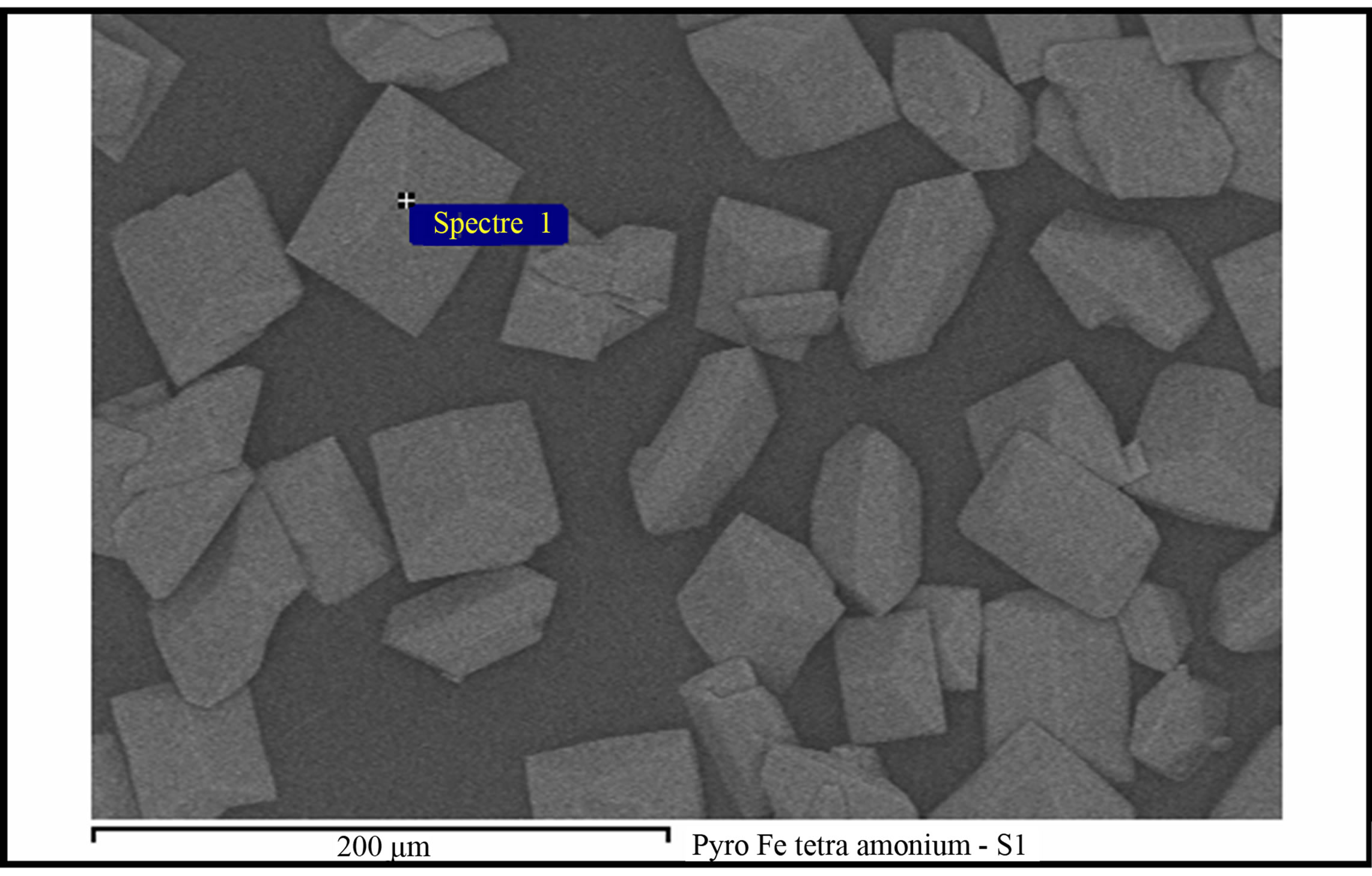 (b)
(b)
Figure 1. (a) Typical EDAX spectrum of [Fe(O3C4)(COO)]∙H2O showing the presence of Fe, O and C; (b) Scanning electron microscopic image of the [Fe(O3C4)(COO)]∙H2O.
the EDAX spectrum of [Fe(O3C4)(COO)]∙H2O which reveals the presence of all non-hydrogen atoms: Fe, C and O. Elemental analysis give these results: for observed we have C 34.10%, O 43.52%, Fe 2.38%; whereas for calculated we find C 43.93%, O 47.08%, Fe 8.99%. The amine used in this synthesis does not appear in the reaction product and its role remains unexplained. The [Figure 1(b)] shows the photograph of scanning electron microscopy (SEM) of the samples [Fe(O3C4)(COO)]∙H2O at room temperature.
2.2. Single Crystal Structure Determination
The unit-cell dimensions were refined using X-ray diffraction data collected with a Kappa CCD Enraf Noninus diffractometor using Mo Kα radiation .The structure, [Fe(O3C4)(COO)]∙H2O, was analyzed with the crystallographic CRYSTALS program [73]. The structure was solved by conventional Patterson and difference-Fourier techniques. The chemical crystal data, the parameters used for X-ray diffraction data collection and strategy used for the crystal structure determination and their results, are listed in Table 1. Table 2 shows the atomic coordinates and equivalent isotropic displacement. The anisotropic displacement parameters are listed in Table 3. Selected bond distances and angles are given in Table 4. Structural graphics were created by the DIAMOND program [74]. The asymmetric unit is shown in (Figure 2).
3. RESULTS AND DISCUSSION
The structure of compound I is representatively described in detail here. In an asymmetrical unit of 2, The structure of [Fe(O3C4)(COO)]∙H2O , Compound I, is formed of a network of octahedral coordination by Fe carboxylate units btec. It also contains 11 non-hydrogen atoms. The Fe atom is octahedrally coordinated by six oxygen atoms from four different carboxylic groups. The Fe-O distances are in the range 1.965(11) - 2.038(4) (av.2.013 Å) and the O-Fe-O angles are in the range 86.34(16) - 179.994° (av.102.856°). Bond valence sum calculations 23 indicated that the valence states of the Fe, C and O in II were +2, +4 and −2 respectively. Their selected bond lengths and bond angles are listed in Table 4.
The bonded oxygen atoms of the carboxylate groups have C-O distances in the range 1.276(5) - 1.290(5)Å. The O-C-O bond angles have an average value of 125.16◦. The present compound adds another example to this family of compounds. The various structural parameters observed in the present compound are in agreement with those observed before. The present compoun d adds another example to this family of compounds. The various structural parameters observed in the present compound are in agreement with those ob-
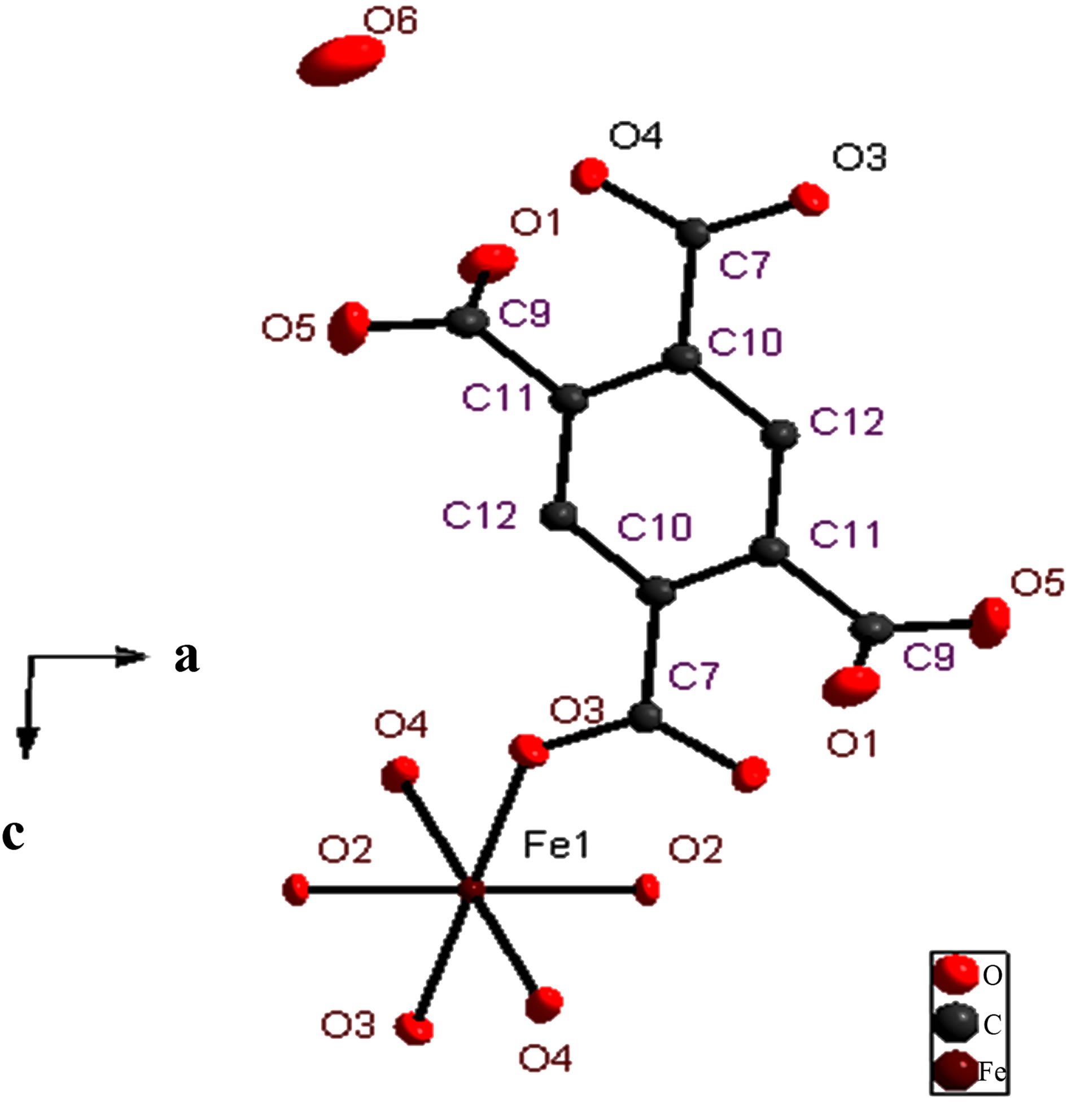
Figure 2. Asymmetric unit of [Fe(O3C4)(COO)]∙H2O. Thermal ellipsoids are given at 50% probability.
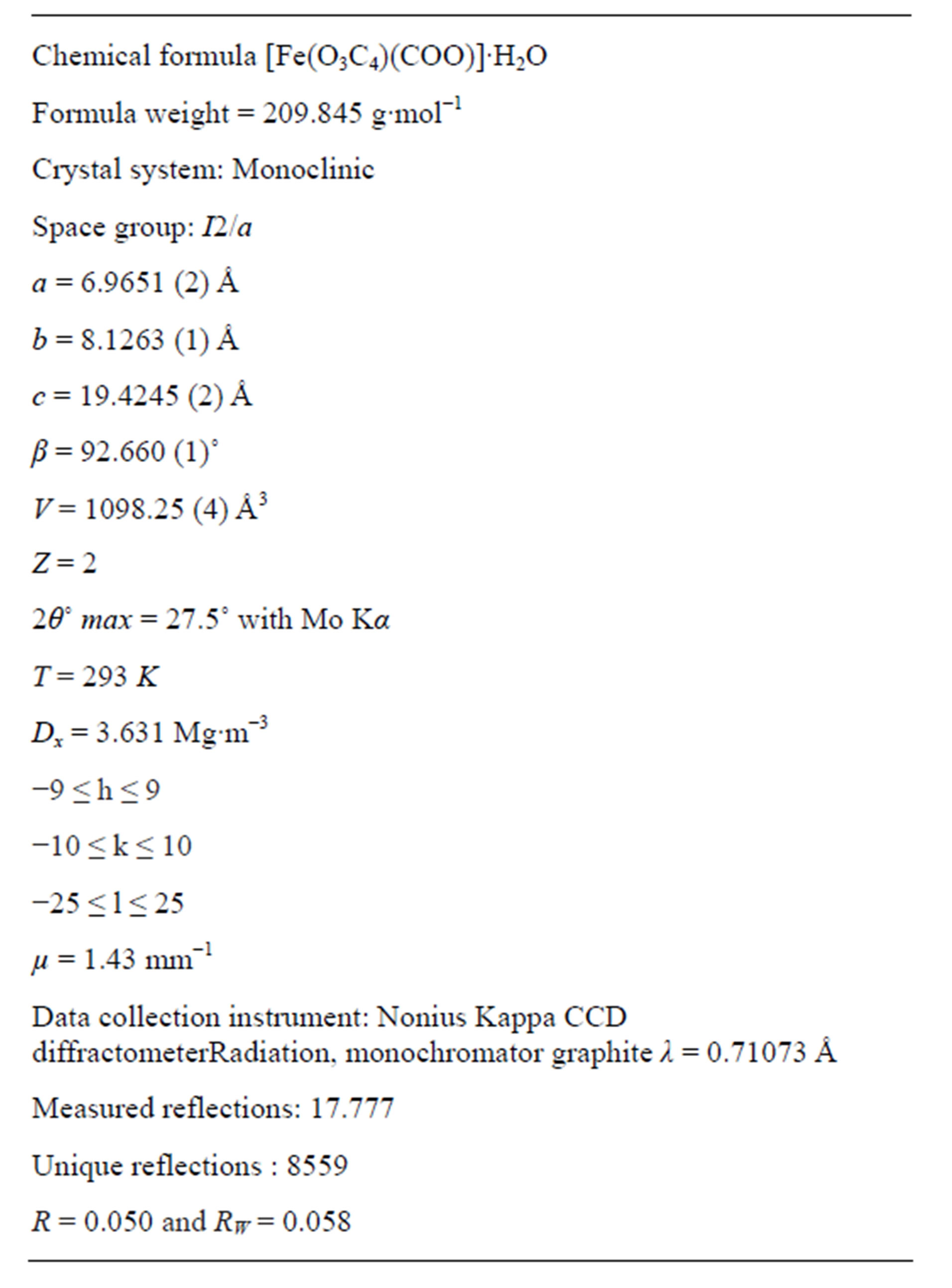
Table 1. Crystallographic data for [Fe(O3C4)(COO)]∙H2O.
served before. The structure of [Fe(O3C4)(COO)]∙H2O, compound I, consists of a network of octahedral Fe centers coordinated by the btec carboxylate units (Figure 2). The connectivity between these units gives rise to a two dimensional hybrid layered structure in the ac and bc planes as shown in (Figures 3 and 4). The structure re-
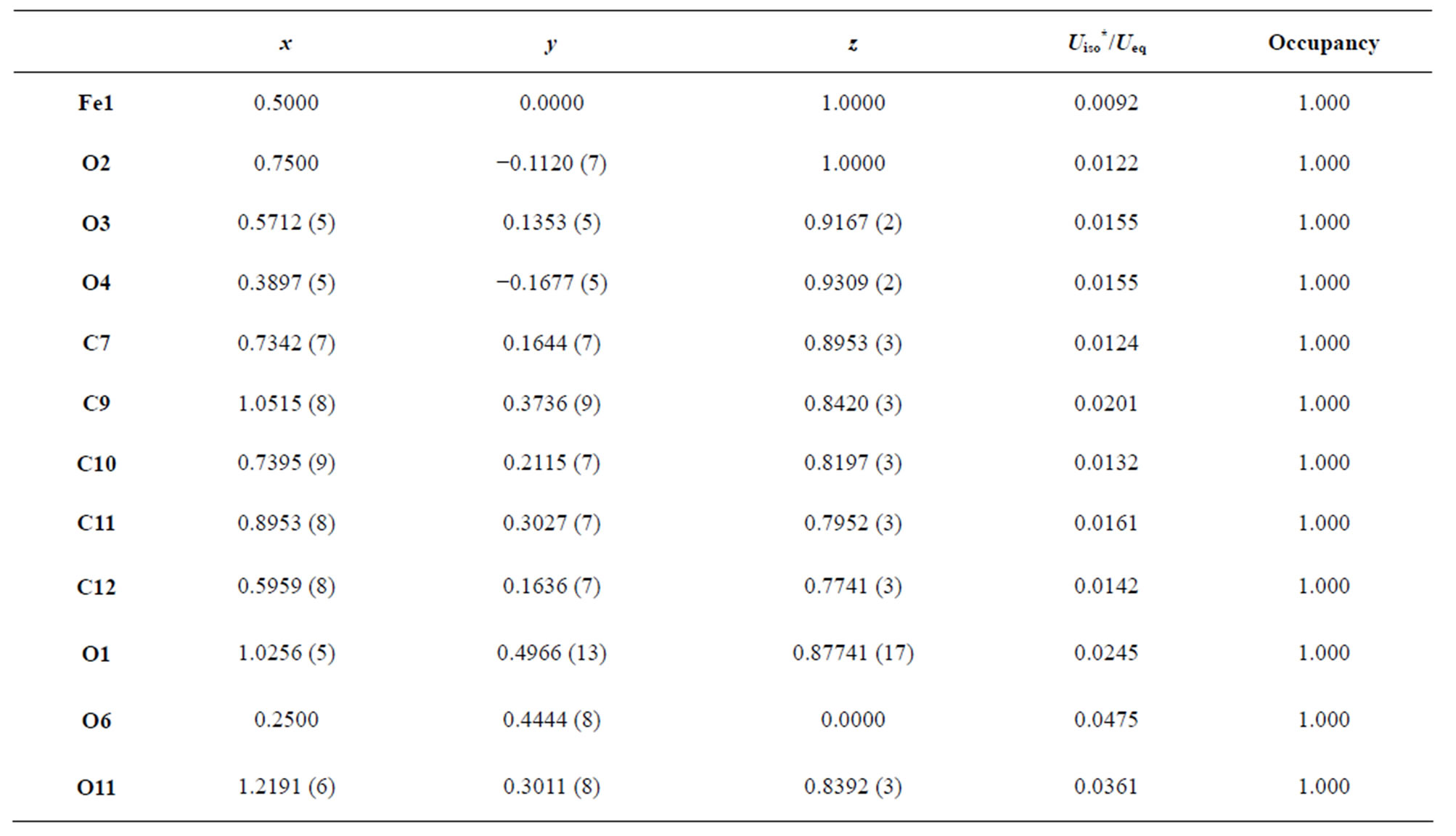
Table 2. Fractional atomic coordinates and equivalent isotropic displacement for [Fe(O3C4)(COO)]∙H2O.
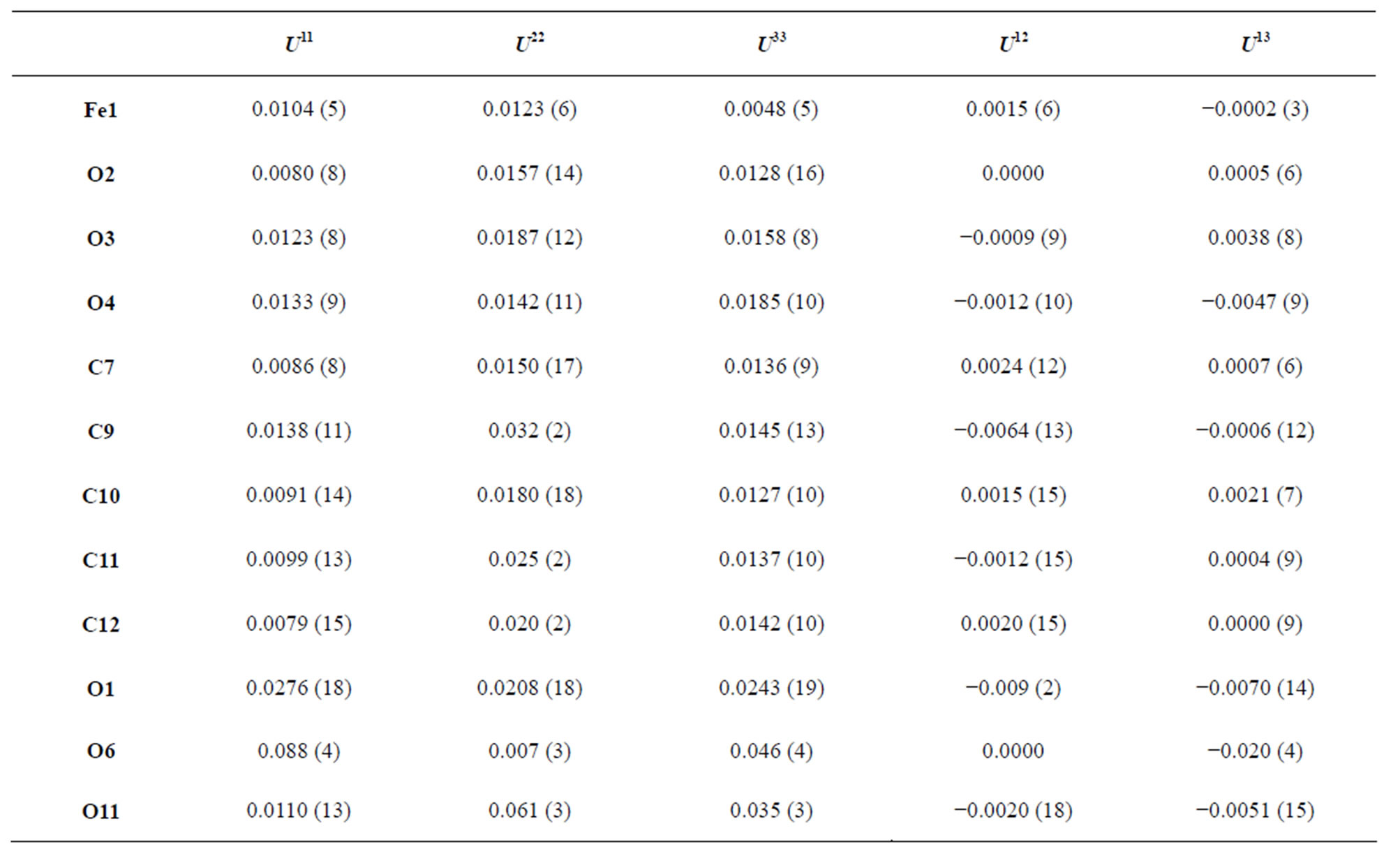
Table 3. Anisotropic displacement parameters (Å2).
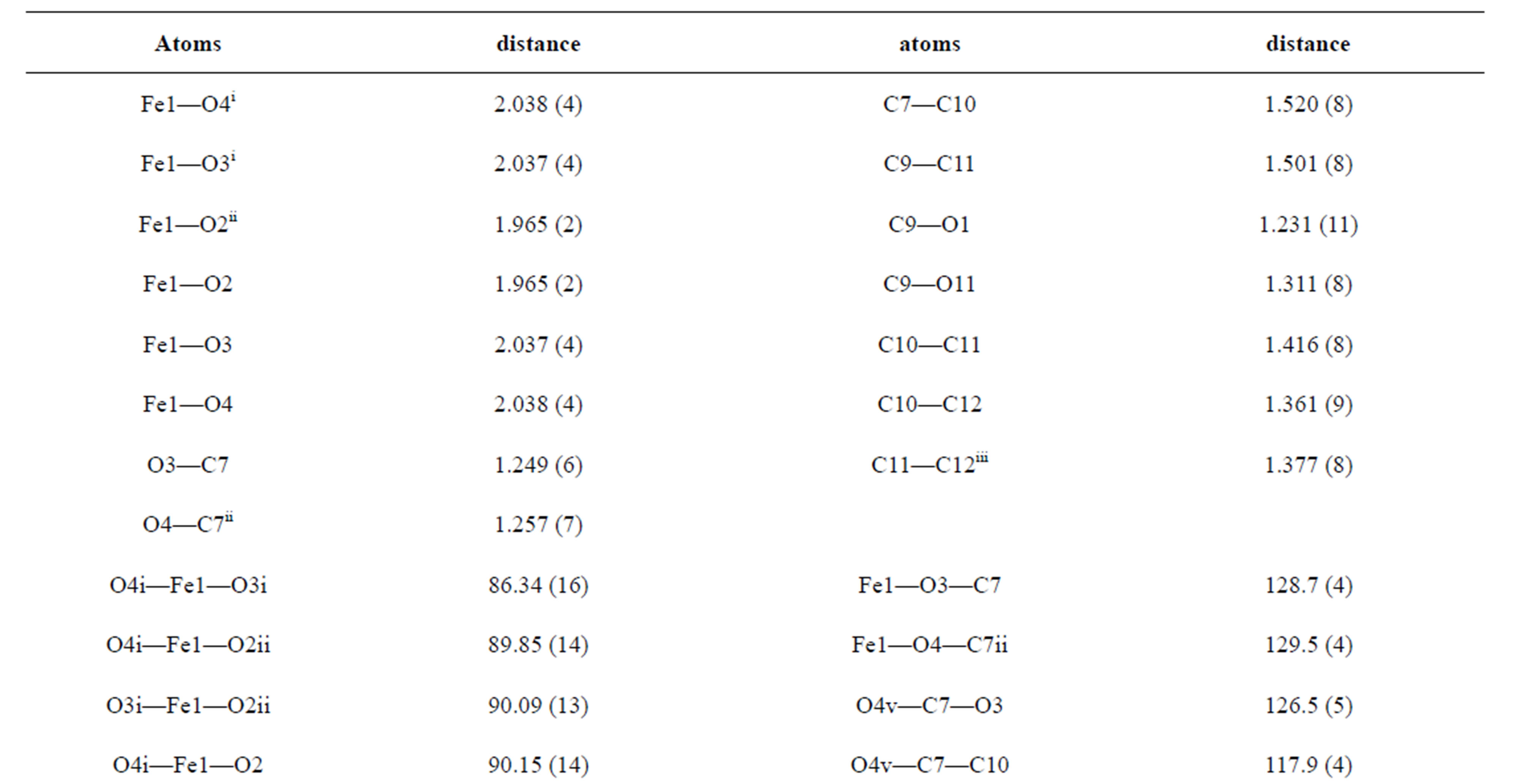
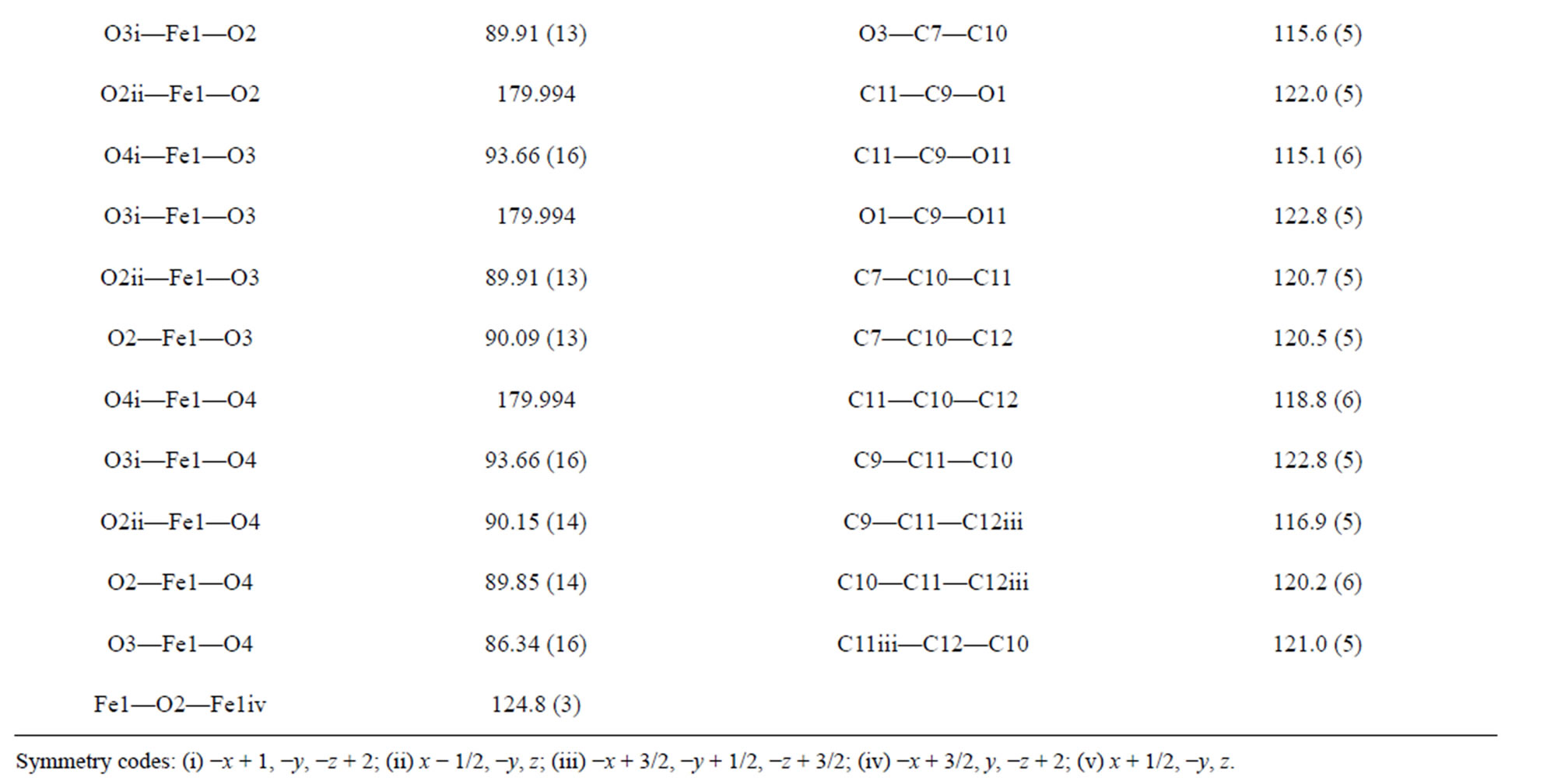
Table 4. Main interatomic distances (Å) and bonds angles (deg).
sembles a 4-connected network in which each Fe atom is connected to four btec anions and each btec anion is linked to two Fe2+ ions. The water molecules also occupy the interlamellar region.
4. CONCLUSION
In this work, we report a novel metal–organic complex [Fe(O3C4)(COO)]∙H2O (I), which is prepared by the hydrothermal synthesis route. It crystallizes in the monoclinic symmetry, space group I2/a. Compound I exhibits a novel bi-dimensional network constructed from bridging btec ligand. The successful isolation of compound I not only confirms that such metal–organic compounds may be designed and synthesized according to the inherent stereo and interactive information stored in the organic ligands and metal ions [75], but also further proves the strong capability of hydrothermal reactions in preparing novel metal–organic materials with mixed or-
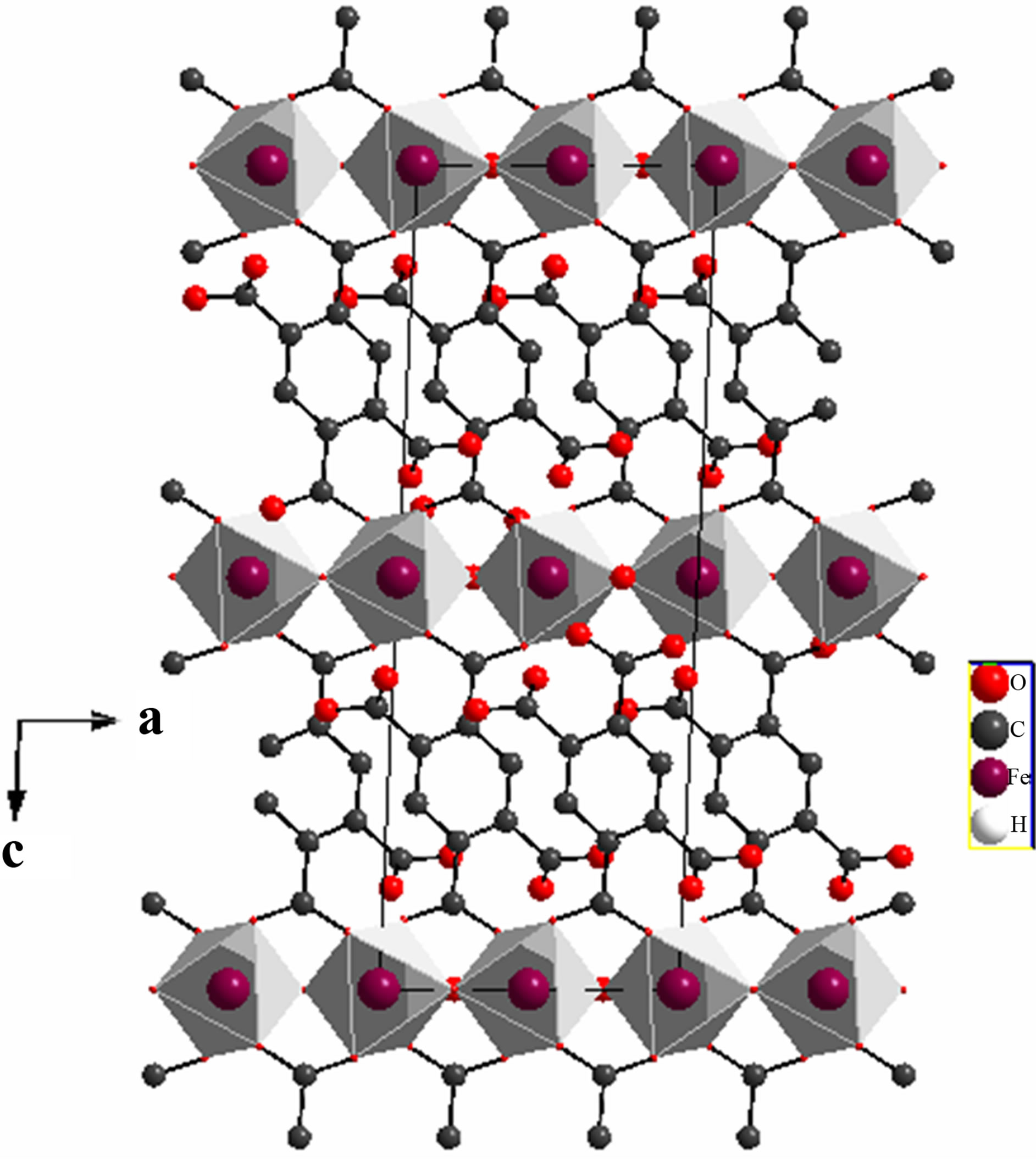
Figure 3. The projection structure of [Fe(O3C4)(COO)]∙H2O, in the ac plane showing a single layer.
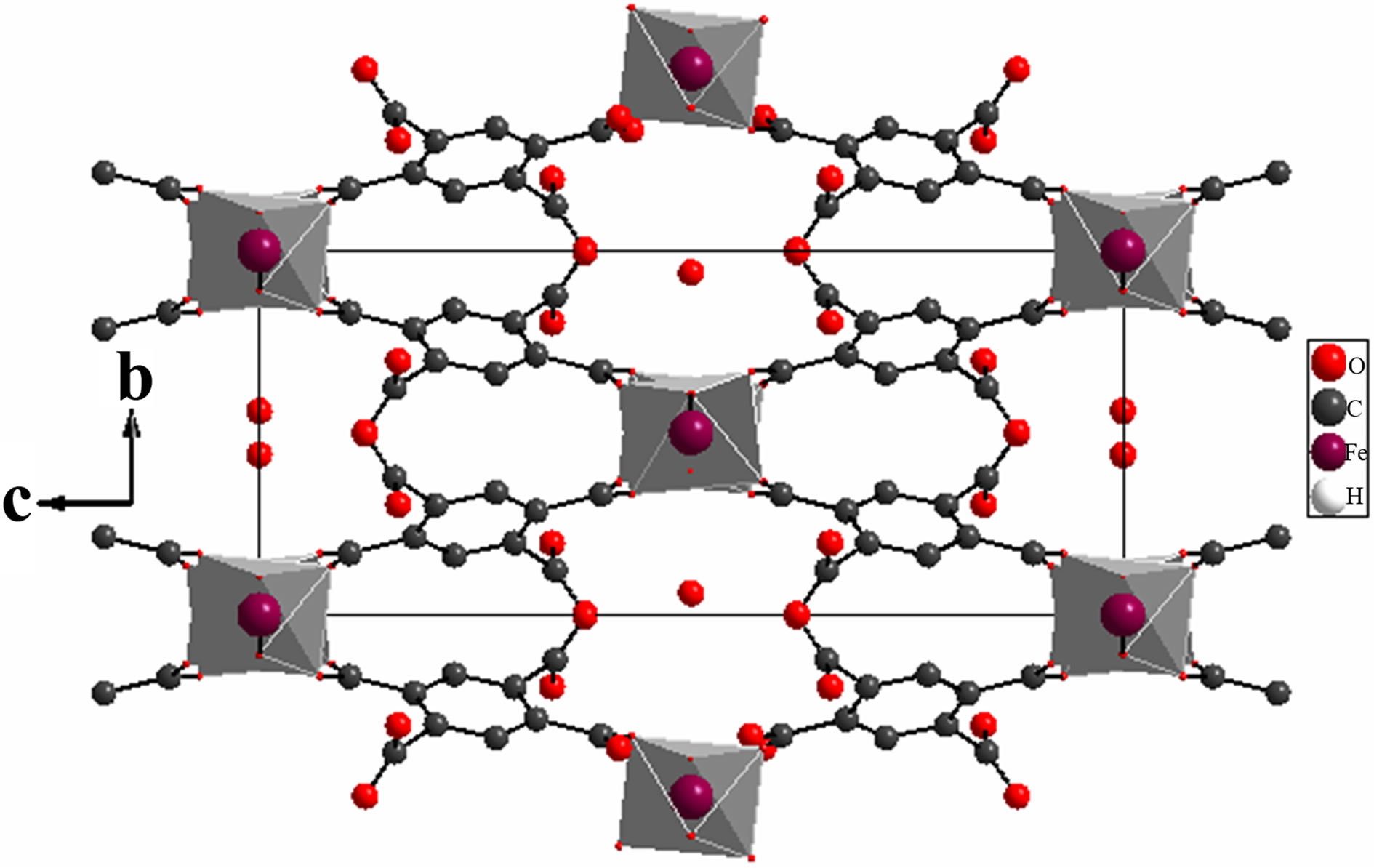
Figure 4. The projection structure of [Fe(O3C4)(COO)]∙H2O, in the bc plane showing a single layer.
ganic ligands.
5. ACKNOWLEDGEMENT
This work is supported by the minister of superior education and research.
REFERENCES
- O’Keeffe, M., Peskov, M. A., Ramsden S. J. and Yaghi O. M. (2008) The reticular chemistry structure resource (RCSR) database of, and symbols for, crystal nets. Accounts of Chemical Research, 41, 1782-1789. http://dx.doi.org/10.1021/ar800124u
- Wang, Z. and Cohen, S.M. (2009) Postsynthetic modification of metal-organic frameworks. Chemical Society Reviews, 38, 1315-1329. http://dx.doi.org/10.1039/b802258p
- Yaghi, O.M., O’Keeffe, M., Ockwing, N.W., Chae, H.K., Eddaoudi, M. and Kim, J. (2003) Reticular synthesis and the design of new materials. Nature, 42, 3705-3714. http://dx.doi.org/10.1038/nature01650
- Yang, W.B., Lin, X., Jia, J.H., Blake, A.J., Wison, C., Hubberstey, P., Champness, N.R. and Schröder, M. (2008) A biporous coordination framework with high H2 storage density. Chemical Communications, 359-361. http://dx.doi.org/10.1039/b712201b
- Lee, Y.G., Moon, H.R., Cheon, Y.E. and Suh, M.P. (2008) A comparison of the H2 sorption capacities of isostructural metal-organic frameworks with and without accessible metal sites: [{Zn2(abtc)(dmf)2}3] and [{Cu2(abtc) (dmf)2}3] versus [{Cu2(abtc)}3]. Angewandte Chemie International Edition, 47, 7741-7745. http://dx.doi.org/10.1002/anie.200801488
- Liu, Y.L., Eubank, J.F., Cairns, A.J., Eckert, J., Kravtsow, V.C., Luebke, R. and Eddaoudi, M. (2007) Assembly of metal-organic frameworks (MOFs) based on indium-trimer building blocks: A porous MOF with soc topology and high hydrogen storage. Angewandte Chemie International Edition, 46, 3278-3283. http://dx.doi.org/10.1002/anie.200604306
- McManus, G.J., Wang, Z.Q., Beauchamp, D.A. and Zaworotko, M.J. (2007) A novel metal-organic ternary topology constructed from triangular, square and tetrahedral molecular building blocks. Chemical Communications, 5212-5213. http://dx.doi.org/10.1039/b712905j
- Perry IV, J.J., Perman, J.A. and Zaworotko, M.J. (2009) Design and synthesis of metal-organic frameworks using metal-organic polyhedra as supermolecular building blocks. Chemical Society Reviews, 38, 1400-1417. http://dx.doi.org/10.1039/b807086p
- Qiu, Y.C., Deng, H., Yang, S., Mou, J., Daiguebonne, C., Kerbellec, N., Guillou, O. and Batten, S.R. (2009) Syntheses, crystal structures, and gas storage studies in new three-dimensional 5-aminoisophthalate praseodymium polymeric complexes. Inorganic Chemistry, 48, 3976-3981. http://dx.doi.org/10.1021/ic8020518
- Li,B. K., Olson, D.H., Lee, J.Y., Bi, W., Yuen, T., Xu, Q. and Li, J. (2008) Multifunctional microporous MOFs exhibiting gas/hydrocarbon adsorption selectivity, separation capability and three-dimensional magnetic ordering. Advanced Functional Materials, 18, 2205-2214. http://dx.doi.org/10.1002/adfm.200800058
- Cheng, P., Yan, S.P., Xie, C.Z., Zhao, B., Chen, X.Y., Liu, X.W., Li, C.H., Liao, D.Z., Jiang, Z.H. and Wang, G.L. (2004) Ferromagnetic and antiferromagnetic polymeric complexes with the macrocyclic ligand 1,4,7-triazacyclononane. European Journal of Inorganic Chemistry, 2004, 2369-2378. http://dx.doi.org/10.1002/ejic.200300791
- Liu, H.Y., Zhao, B., Shi, W., Zhang, Z.J., Cheng, P., Liao, D.Z. and Yan, S.P. (2009) A chiral metal-organic framework based on heptanuclear zinc cores. European Journal of Inorganic Chemistry, 2009, 2599-2602. http://dx.doi.org/10.1002/ejic.200900185
- Janiank, C. (2003) Engineering coordination polymers towards applications. Dalton Transactions, 2781-2804. http://dx.doi.org/10.1039/b305705b
- Kitagawa, S. and Uemura, K. (2005) Dynamic porous properties of coordination polymers inspired by hydrogen bonds. Chemical Society Reviews, 34, 109-119. http://dx.doi.org/10.1039/b313997m
- Shen, W.Z., Chen, X.Y., Cheng, P., Yan, S.P., Zhai, B., Liao, D.Z. And Jiang, Z.H. (2005) A structural and magnetic investigation of ferromagnetically coupled copper(II) isophthalates. European Journal of Inorganic Chemistry, 2005, 2297-2305. http://dx.doi.org/10.1002/ejic.200401022
- Zhao, X.Q., Zuo, Y., Gao, D.L., Zhao, B., Shi, W. and Cheng, P. (2007) Pillared 3d-4f frameworks with rare 3D architecture showing the coexistence of ferromagnetic and antiferromagnetic interactions between gadolinium ions. Crystal Growth & Design, 7, 851-853. http://dx.doi.org/10.1021/cg060823l
- Zhao, B., Cheng, P., Dai, Y., Cheng, C., Liao, D.Z., Yan, S.P., Jiang, Z.H. and Wang, G.L. (2003) A nanotubular 3d coordination polymer based on a 3d-4f heterometallic assembly. Angewandte Chemie International Edition, 42, 934-936. http://dx.doi.org/10.1002/anie.200390248
- Wang, R.H., Hong, M.C., Luo, J.H., Cao, R. and Weng, J.B. (2003) A new type of three-dimensional framework constructed from dodecanuclear cadmium(II) macrocycles. Chemical Communications, 8, 1018-1019. http://dx.doi.org/10.1039/b212425d
- Vaidhyanathan, R., Natarajan, S. and Rao, C.N.R. (2002) Three-dimensional open-framework neodymium oxalates with organic functional groups protruding in 12-member channels. Inorganic Chemistry, 41, 4496-4501. http://dx.doi.org/10.1021/ic020197r
- Cerdeira, A.C., Sim, D., Santos, I.C., Machado, A. and Pereira, L.C.J. (2008) (n-Bu4N)[Fe(cbdt)2]: Synthesis, crystal structure and magnetic characterisation of a new FeIII bisdithiolene complex. Inorganica Chimica Acta, 361, 3836-3840. http://dx.doi.org/10.1016/j.ica.2008.02.068
- Yamada, T. and Kitagawa, H. (2009) Protection and deprotection approach for the introduction of functional groups into metal-organic frameworks. Journal of the American Chemical Society, 131, 6312-6313. http://dx.doi.org/10.1021/ja809352y
- Fang, M., Zhao, B., Zuo, Y., Chen, J., Shi, W., Liang, J. and Cheng, P. (2009) Unique two-fold interpenetration of 3D microporous 3d-4f heterometal-organic frameworks (HMOF) based on a rigid ligand. Dalton Transactions, 7765-7770. http://dx.doi.org/10.1039/b903737c
- Mavrandonakis, A., Klontzas, E., Tylianakis, E. and Froudakis, G.E. (2009) Enhancement of hydrogen adsorption in metal-organic frameworks by the incorporation of the sulfonate group and Li cations. A multiscale computational study. Journal of the American Chemical Society, 131, 13410-13414. http://dx.doi.org/10.1021/ja9043888
- Manna, S.C., Zangrando, E., Ribas, J. and Chaudhuri, N.R. (2007) Cobalt(II)-(dpyo)-dicarboxylate networks: unique H-bonded assembly and rare bridging mode of dpyo in one of them [dpyo = 4,4’-dipyridyl N,N’-dioxide]. Dalton Transactions, 1383-1391. http://dx.doi.org/10.1039/b617278d
- Wang, X. S., Ma, S., Sun, D. F., Parkin, S. and Zhou, H. C. (2006) A Mesoporous metal-organic framework with permanent porosity. Journal of the American Chemical Society, 128, 16474-16475. http://dx.doi.org/10.1021/ja066616r
- Chung, H. T., Tsai, H. L., Yang, E. C., Chien, P. H., Peng, C. C., Huang, Y. C. and Liu, Y. H. (2009) A new manganese coordination polymer containing 1,2,4-benzenetricarboxylic acid. European Journal of Inorganic Chemistry, 3661-3666. http://dx.doi.org/10.1002/ejic.200900375
- Shekhah, O., Wang, H., Zacher, D., Fischer, R.A. and Woll, C. (2009) Growth mechanism of metal-organic frameworks: Insights into the nucleation by employing a step-by-step route. Angewandte Chemie International Edition, 48, 5038-5041. http://dx.doi.org/10.1002/anie.200900378
- Ma, S., Simmons, J.M., Sun, D.F., Yuan, D.Q. and Zhou, H.C. (2009) Porous metal-organic frameworks based on an anthracene derivative: Syntheses, structure analysis, and hydrogen sorption studies. Inorganic Chemistry, 48, 5263-5268. http://dx.doi.org/10.1021/ic900217t
- Hong, S., Oh, M., Park, M., Yoon, J.W., Chang, J.S. and Lah, M.S. (2009) Metal-organic frameworks (MOFs) constructed from ZnII/CdII-2,2’-bipyridines and polycarboxylic acids: Synthesis, characterization and microstructural studies. Chemical Communications, 5397-5399. http://dx.doi.org/10.1039/b909250a
- Prajapati, R., Mishra, L., Kimura, K. and Raghavaiah, P. (2009) Metal-organic frameworks (MOFs) Constructed from ZnII/CdII-2,2’-bipyridines and polycarboxylic acids: Synthesis, characterization and microstructural studies. Polyhedron, 28, 600-608. http://dx.doi.org/10.1016/j.poly.2008.11.059
- Li, H., Eddaoudi, M., Groy, T.L. and Yaghi, O.M. (1998) Establishing microporosity in open metal-organic frameworks: Gas sorption isotherms for Zn(BDC) (BDC = 1,4- benzenedicarboxylate). Journal of the American Chemical Society, 120, 8571-8572. http://dx.doi.org/10.1021/ja981669x
- Reineke, T.M., Eddaoudi, M., Fehr, M., Kelley, D. and Yaghi, O.M. (1999) From condensed lanthanide coordination solids to microporous frameworks having accessible metal sites. Journal of the American Chemical Society, 121, 1651-1657. http://dx.doi.org/10.1021/ja983577d
- Groeneman, R.H., MacGillivray, L.R. and Atwood, J.L. (1998) Aromatic inclusion within a neutral cavitycontaining rectangular grid. Chemical Communications, 2735- 2736. http://dx.doi.org/10.1039/a807738j
- Groeneman, R.H., MacGillivray, L.R. and Atwood, J.L. (1999) One-dimensional coordination polymers based upon bridging terephthalate ions. Inorganic Chemistry, 38, 208- 209. http://dx.doi.org/10.1021/ic9807137
- Yaghi, O.M., Li, H. and Groy, T.L. (1999) Construction of porous solids from hydrogen-bonded metal complexes of 1,3,5-benzenetricarboxylic acid. Journal of the American Chemical Society, 118, 9096-9101 http://dx.doi.org/10.1021/ja960746q
- Yaghi, O.M., Li, G. and Li, H. (1995) Selective binding and removal of guests in a microporous metal-organic framework. Nature, 378, 703-706. http://dx.doi.org/10.1038/378703a0
- Yaghi, O.M., Davis, C.E., Li, G. and Li, H. (1997) Selective guest binding by tailored channels in a 3-d porous zinc(II)-benzenetricarboxylate network. Journal of the American Chemical Society, 119, 2861-2868. http://dx.doi.org/10.1021/ja9639473
- Kepert, C.J. and Rosseinsky, M.J. (1998) A porous chiral framework of coordinated 1,3,5-benzenetricarboxylate: Quadruple interpenetration of the (10,3)—A network. Chemical Communications, 31-32. http://dx.doi.org/10.1039/a705336c
- Platers, M.J., Howie, R.A. and Roberts, A.J. (1997) Hydrothermal synthesis and X-ray structural characterisation ofcalcium benzene-1,3,5-tricarboxylate. Chemical Communications, 893-894. http://dx.doi.org/10.1039/a700675f
- Choi, H.J. and Suh, M.P. (1998) Self-assembly of molecular brick wall and molecular honeycomb from nickel (II) macrocycle and 1,3,5-benzenetricarboxylate: Guest-dependent host structures. Journal of the American Chemical Society, 120, 10622-10628. http://dx.doi.org/10.1021/ja980504l
- Choi, H.J., Lee, T.S. and Suh, M.P. (1999) Self-assembly of a molecular floral lace with one-dimensional channels and inclusion of glucose. Angewandte Chemie International Edition, 38, 1405-1408. http://dx.doi.org/10.1002/(SICI)1521-3773(19990517)38:10<1405::AID-ANIE1405>3.0.CO;2-H
- Yaghi, O.M. and Li, H. (1996) T-shaped molecular building units in the porous structure of Ag(4,4‘-bpy)·NO3. Journal of the American Chemical Society, 118, 295-296. http://dx.doi.org/10.1021/ja953438l
- Deakin, L., Arif, A.M. and Miller, J.S. (1999) Observation of ferromagnetic and antiferromagnetic coupling in 1-D and 2-D extended structures of copper(II) terephthalates. Inorganic Chemistry, 38, 5072-5077. http://dx.doi.org/10.1021/ic990400r
- St. Foreman, J.M.R., Gelbrich, T., Hursthouse, M.B. and Plater, M.J. (2000) Hydrothermal synthesis and characterization of lead(II) benzene-1,3,5-tricarboxylate [Pb3BTC2]·H2O: A lead(II) carboxylate polymer. Inorganic Chemistry Communications, 3, 234-238. http://dx.doi.org/10.1016/S1387-7003(00)00064-2
- Li, H., Davis, C.E., Groy, T.L., Kelley, D.G. and Yaghi, O.M. (1998) Coordinatively unsaturated metal centers in the extended porous framework of Zn3(BDC)3·6CH3OH (BDC=1,4-benzenedi-carboxylate). Journal of the American Chemical Society, 120, 2186-2187. http://dx.doi.org/10.1021/ja974172g
- Chen, B., Eddaoudi, M., Reineke, T.M., Kampf, J.W., Keeffe, M.O. and Yaghi, O.M. (2000) Cu2(ATC)·6H2O: Design of open metal sites in porous metal—Organic crystals (ATC: 1,3,5,7-adamantane tetracarboxylate). Journal of the American Chemical Society, 122, 11559-11560. http://dx.doi.org/10.1021/ja003159k
- Robl, C. and Hentschel, S. (1991) On dicobaltpyromellitate-octadecahydrate (Co2[C6H2(COO)4]·18H2O)—A compound with the novel chain-like polyanion Co(H2O)4 [C6H2(COO)4]2n-n. Materials Research Bulletin, 26, 1355- 1362. http://dx.doi.org/10.1016/0025-5408(91)90152-C
- Poleti, D. and Karanovic, L. (1989) Structure of hexaaquacobalt(II) catena-tetraaqua [1,2,4,5-benzenetetracarboxylato(4-)]-cobaltate(II) 7.36-hydrate. Acta Crystallographica Section C, 45, 1716-1718. http://dx.doi.org/10.1107/S0108270189002489
- Ward, D.L. and Leuhrs, D.C. (1983) Hexaaquacobalt(II) dihydrogen 1,2,4,5-benzenetetracarboxylate, [Co(H2O)6] [C10H4O8]. Acta Crystallographica Section C, 39, 1370- 1372. http://dx.doi.org/10.1107/S0108270183008550
- Robl, C. (1992) Water clustering in the zeolite-like channel structure of Na2Zn[C6H2(COO)4]·9H2O. Materials Research Bulletin, 22, 99-107. http://dx.doi.org/10.1016/0025-5408(92)90047-4
- Poleti, D., Stojakovic, D.R., Prelesnik, B.V. and Herak, R.M. (1988) Structure of binuclear hexaaqua[1,2,4,5- benzenetetracarboxylato(4-)]-bis(ethylenediamine)dinickel(II) tetrahydrate. Acta Crystallographica Section C, 44, 242- 245. http://dx.doi.org/10.1107/S0108270187009764
- Jessen, S.M. and Kuppers, H. (1990) The structure of dilithium dihydrogen 1,2,4,5-benzenetetracarboxylate tetrahydrate (dilithium dihydrogen pyromellitate tetrahydrate). Acta Crystallographica Section C, 46, 2351-2354. http://dx.doi.org/10.1107/S0108270190004863
- Chu, D., Xu, J., Duan, L., Wang, T., Tang, A. and Ye, L. (2001) Hydrothermal synthesis of a two-dimensional coordination polymer [Fe(phen)(μ6-bta)1/2]n (bta = benzene-1,2,4,5-tetracarboxylate, phen=1,10-phenanthroline). European Journal of Inorganic Chemistry, 2001, 1135- 1137. http://dx.doi.org/10.1002/1099-0682(200105)2001:5<1135::AID-EJIC1135>3.0.CO;2-G
- Rochon, F.D. and Massarweh, G. (2001) Study of the aqueous reactions of metallic ions with benzenetetracarboxylate ions: Part 2. Crystal structures of compounds of the type M(H2O)5(μ-C6H2(COO)4)M(H2O)5 (M=Mn and Co) and a novel mixed-metallic Mn-Co dimeric compound. Inorganica Chimica Acta, 314, 163-171. http://dx.doi.org/10.1016/S0020-1693(01)00307-3
- Plater, M.J., St. Foreman, J.M.R., Howie, R.A., Skakle, J.M.S. and Slawin, A.M.Z. (2001) Hydrothermal synthesis of polymeric metal carboxylates from benzene1, 2,4,5-tetracarboxylic acid and benzene-1,2,4-tricarboxylic acid. Inorganica Chimica Acta, 315, 126-132. http://dx.doi.org/10.1016/S0020-1693(01)00318-8
- Usubaliev, B.T., Shnulin, A.N. and Mamadow, H.S. (1982) Molecular and crystal structure of tetra-aquobis(pyridine)-tetra(p-nitrobenzoato)dicopper (II). Journal of Structural Chemistry September, 23, 760-764.
- Robl, C. (1987) Komplexe mit aromatischen carbonsäuren. I Darstellung und struktur von zinkpyromellitat-heptahydrat. Zeitschrift für anorganische und allgemeine Chemie, 554, 79-86. http://dx.doi.org/10.1002/zaac.19875541109
- Zou, J.Z., Liu, Q., Xu, Z., You, X.Z. and Huang, X.Y. (1998) TCB bridged binuclear and polynuclear copper(II) complexes: A novel three dimension-network structure complex [(Cudien)2(Cudien·H2O)TCB (ClO4)2·H2O]n (TCB= tetracarboxylatobenzene, dien=3-azapentane-1,5-diamine). Polyhedron, 17, 1863-1869. http://dx.doi.org/10.1016/S0277-5387(97)00524-X
- Jessen, S.M. Kuppers, H. and Luehrs, D.C. (1992) Hydrogen-bonding in acid litetrabutylammonium, nitetrabutylammonium, tetrabutylammonium, and ammonium-salts of benzene-1,2,4,5-tetracarboxylic acid (pyromellitic acid). Zeitschrift Fur Naturforschung Section B—A Journal of Chemical Sciences, 47, 1141-1153.
- Karanovic, L., Poleti, D., Bogdanovic, G.A. and Spasojevic-de Bire, A. (1999) Disodium hexaaquacobalt (II) bis [1,2,4,5-dihydrogénophosphate benzenetetracarboxylate (2-)] tétrahydraté. ACTA Crystallographica Section de Communications C—Structure Cristalline, 55, 911-913.
- Zhang, B., Jin, Z.S., Wang, Y.L., Wei, G.C. and Chen, W.Q. (1992) Syntheses and crystal structures of benzyland cyclopentyl-cyclopentadienyl sodium tetra-hydrofuranate complexes. Jiegou Huaxue, 8, 15-20.
- Chaudhuri, P., Oder, K., Wieghardt, K., Gehring, S., Haase, W., Nuber, B. and Weiss, J. (1988) Moderately strong intramolecular magnetic exchange interaction between the copper(II) ions separated by 11.25 .ANG. in [L2Cu2(OH2)2(.eta.-terephthalato)](ClO4)2 (L = 1,4,7-trimethyl-1,4,7-triazacyclononane). Journal of the American Chemical Society, 110, 3657-3658. http://dx.doi.org/10.1021/ja00219a051
- Jaber, F., Charbonnier, F. and Faure, R. (1997) Crystal structure of a silver(I) complex with the 1,2,4,5-benzenetetracarboxylic acid (pyromellitic acid). Journal of Chemical Crystallography, 27, 397-400. http://dx.doi.org/10.1007/BF02576473
- Chen, W., Heng Tioh, N., Zou, J.-Z., Xu, Z. and You, X.-Z. (1996) A Tetracarboxylatobenzene-Bridged Binuclear Copper(II) Complex. Acta Crystallographica Section C, 52, 43-45. http://dx.doi.org/10.1107/S0108270195010444
- Luehrs, D.C. and Day, C.S. (1988) The crystal structure of thallium(I) 1,2,4,5-benzenetetracarboxylate. Inorganica Chimica Acta, 142, 201-202. http://dx.doi.org/10.1016/S0020-1693(00)81560-1
- [Vitillo, J.G., Regli, L., Chavan, S., Ricchiardi, G., Spoto, G., Dietzel, P.D.C., Bordiga, S. and Zecchina, A. (2008) Role of exposed metal sites in hydrogen storage in MOFs. Journal of the American Chemical Society, 130, 8386- 8396. http://dx.doi.org/10.1021/ja8007159
- Wang, Y.B., Zhuang, W.J., Jin, L.P. and Lu, S.Z. (2005) New lanthanide coordination polymers of 1,2,4,5-benzenetetracarboxylic acid and 4,4’-bipyridine with 1D channels. Journal of Molecular Structure, 737, 165-172. http://dx.doi.org/10.1016/j.molstruc.2004.10.062
- Cheng, D., Khan, M.A. and Houser, R.P. (2002) Novel sandwich coordination polymers composed of cobalt(II), 1,2,4,5-benzenetetracarboxylato ligands, and homopiperazonium cations. Crystal Growth & Design, 2, 415-420. http://dx.doi.org/10.1021/cg025547z
- Ding, M.T., Wu, J.Y., Liu, Y.H. and Lu, K.L. (2009) Dissolution/reorganization toward the destruction/construction of porous cobalt(II)- and nickel(II)-carboxylate coordination polymers. Inorganic Chemistry, 48, 7457- 7465. http://dx.doi.org/10.1021/ic900037g
- Caskey, S.R. and Matzger, A.J. (2008) Selective metal substitution for the preparation of heterobimetallic microporous coordination polymers. Inorganic Chemistry, 47, 7942-7944. http://dx.doi.org/10.1021/ic8007427
- Cheng, D., Khan, M.A. and Houser, R.P. (2003) Nickel(II) and manganese(II) 1D chain coordination polymers with 1,2,4,5-benzenetetracarboxylato anions. Inorganica Chimica Acta, 351, 242-250. http://dx.doi.org/10.1016/S0020-1693(03)00122-1
- Xiao, D.R., Wang, E.B., An, H.Y., Li, Y.G., Su, Z.M. and Sun, C.Y. (2006) A bridge between pillared-layer and helical structures: A series of three-dimensional pillared coordination polymers with multiform helical chains. Chemistry, 12, 2680-2691. http://dx.doi.org/10.1002/chem.200501308
- Betteridge, P.W., Carruthers, J.R., Cooper, R.I., Prout, K. and Watkin, D.J. (2003) Software for guided crystal structure analysis. Journal of Applied Crystallography, 36, 1487. http://dx.doi.org/10.1107/S0021889803021800
- Brandenburg, K. and Berndt, M. (1999) Diamond. Crystal impact Gb R, Bonn, Germany, Version 2.1.b.
- Cao, R., Sun, D.F., Liang, Y.C., Hong, M.C., Tatsumi, K., Shi, Q. (2002) Syntheses and characterizations of threedimensional channel-like polymeric lanthanide complexes constructed by 1,2,4,5-benzenetetracarboxylic acid. Inorganic Chemistry, 41, 2087-2094. http://dx.doi.org/10.1021/ic0110124
NOTES
*Corresponding author.

